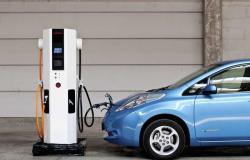The study, published in the journal JNeurosci, is one of the first to experimentally investigate the competing reasons behind movement slowing in adults over 65 years of age. Researchers at CU Boulder found that older adults may move more slowly, at least in part, because it costs them more energy than younger people.
“The reason we move the way we do, from eye movements to reaching out, walking and talking, is a window into aging and Parkinson’s disease. We’re trying to understand the neural basis of this,” says study co-author Alaa Ahmed , professor in the Paul M. Rady Department of Mechanical Engineering at CU Boulder.
Simple analyses
For the study, researchers asked participants aged 18 to 35 and 66 to 87 to complete a simple task: reach for a target on a screen, similar to the video game on a Nintendo Wii .
By analyzing the patterns of these movements, the team found that older adults appear to modify their movements in certain circumstances to conserve their more limited energy reserves.
“All of us, whether young or old, are driven by the desire to obtain the greatest reward from our environment while minimizing the effort to do so,” notes the study’s co-lead author, Dr. Erik Summerside, who earned his PhD in integrative physiology from CU Boulder in 2018.
See also: Why National Registries are important. Dr. Adrian Wiener: I have that concern
Why we move more slowly as we age: two hypotheses
The study explored two hypotheses for the slowing of movements in older adults. The first suggests that older adults’ muscles may work less efficiently, burning more calories while performing the same tasks as younger adults. The second proposes that aging could alter the reward circuitry in the human brain because people produce less dopamine, a brain chemical responsible for providing a feeling of satisfaction after completing a task.
During the experiment, participants used a robotic arm to move a cursor to a target on a computer screen. If they succeeded, they received a small reward, such as the target exploding and the “bing bing” sound. Both age groups reached their targets faster when they knew they would hear the reward sound, but they did so in different ways.
Younger adults moved their arms faster toward the reward, while older adults mainly improved their reaction times. When the researchers added eight kilograms of weight to the robotic arm for the younger participants, the differences between the two age groups disappeared, which piqued their interest.
See also: Who is at risk from Saharan dust. Dr. Adrian Marinescu: It is about the exacerbation of some conditions
Why we move more slowly as we age – PHOTO: Freepik
“It appears that the brain can detect very small changes in how much energy the body uses and adjusts its movements accordingly. Even when you’re moving just a few extra pounds, reacting faster has become the energetically cheaper option to reach reward, so the young adults mimicked the older adults and did just that,” explains study co-lead author Dr. Robert Courter, who earned his PhD in integrative physiology at CU Boulder in 2023.
The findings suggest that the effort costs of stretching appear to be the determining factor in the slowing of movement in older adults. While the study can’t completely rule out the brain’s reward centers as the culprit, if scientists can identify where and how these changes occur in the body, they may be able to develop treatments to reduce the effects of aging and disease.
“Taking it all together, our results suggest that the effort costs of stretching appear to drive movement slowing in older adults,” says Ahmed.
This research could potentially provide doctors with new tools for diagnosing a wide range of diseases, including Parkinson’s disease, multiple sclerosis, depression and schizophrenia. As we continue to unravel the mysteries of aging and movement, studies like this one bring us one step closer to understanding and addressing the challenges that come with aging.
Stay up to date with the latest news. Follow DCMedical on Google News as well
Did this article help you?
Follow the DCMedical Facebook page and the DCMedical Health Dose Instagram page and access more useful content for your health, disease prevention and treatment, first aid measures and useful advice from doctors and patients.





